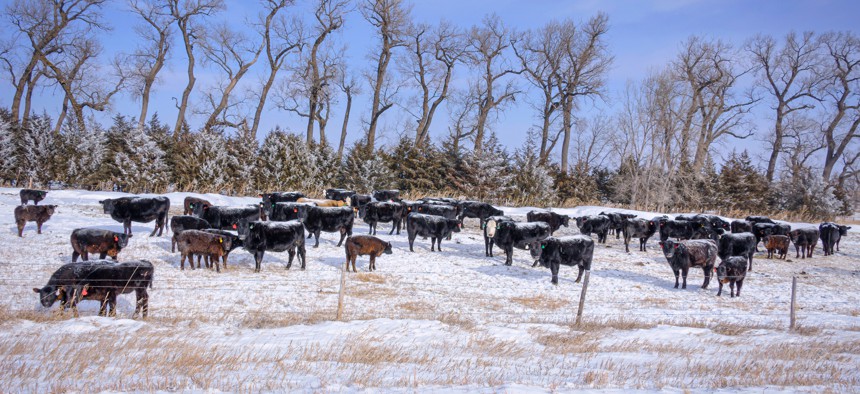Study: Warming Winters Will Thaw Frozen Manure, Further Polluting US Waters

Diana Robinson Photography via Getty Images
Nearly half the country’s waters could see an increase in toxic agricultural runoff.
This story was originally published by Grist. You can subscribe to its weekly newsletter here.
As winters warm, pollution caused by chemicals common in industrial agriculture practices will increase dramatically across nearly half of the United States. That’s according to a new study that says nutrient pollution—chemicals from fertilizer and manure like nitrogen and phosphorus—pollutes lakes, rivers, and groundwater and has been linked to toxic algae blooms in waterways, contaminated drinking water, and mass die-offs of marine life.
The study found that when winters are warmer, rain is more common, causing melt and subsequent runoff of soil packed with nutrients and chemicals. Researchers also found that at warmer winter temperatures, microbial activity occurs in the soil, prompting more nitrogen to develop and get into groundwater. Increased rain-on-snow events could increase nitrogen and phosphorus levels across 40 percent of the contiguous U.S.
“The idea of winter nutrient pollution is new, because it’s a relatively recent impact of climate change with the potential to cause significant problems for people and the environment,” said Carol Adair, a University of Vermont researcher and co-author of the report, in a statement. “We are clearly seeing much larger amounts of cloudy water and sediment traveling through U.S. watersheds in winter.”
In the past, these chemicals have been locked in frozen soils during wintertime, waiting to thaw in the spring. Now, regions from the Mountain West to the Upper Midwest are seeing their winters rapidly disappear.
Nutrient pollution causes rapid increases in toxic algae blooms that drive up water bills and cleanup costs across the Great Lakes region, a place known for its agricultural land use and bitter winters. These blooms, in addition to being greenhouse gas emitters, are also killing life inside lakes and rivers, as phosphorus and nitrogen create hypoxic spots in water where oxygen is little to none. These areas, also known as “dead zones,” have been the cause of mass fish death across the country. This year, a large bloom threatening the San Francisco Bay is returning, with water experts saying these chemicals are at the root of one of the nations most nutrient-rich water bodies.
Researchers found that, in 2019, the snow-packed Mississippi River and its watersheds flooded after large-scale rain, causing a wave of nutrients and sediment to flow in the Gulf of Mexico contributing to one of the gulf’s largest fish and other aquatic life die-offs. The mass deaths disrupted aquatic food webs and caused harsh economic conditions for fisheries that rely on commercial quantities of shrimp and fish.
Researchers of this first-of-its-kind study noted that precise data on how much nutrient pollution has occurred in the past when snowy states have large melts or thawing winters is not available, but point to a need to increase watershed and water quality research.
Meteorologists forecast that winter will be warmer than usual this year, with a mild start to central and Midwest winters and end-of-the-year temperatures expected to be about 3 degrees Fahrenheit above normal across much of the country’s center.
Aimee Classen is a University of Michigan researcher and study co-author. “If we care about our water quality, we can no longer ignore how climate change impacts winter precipitation,” she said.





